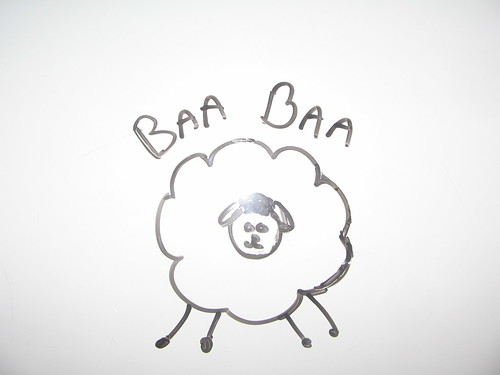
My students think this should be called "hot seat", but it's nothing like the TV show, so I have called it Caterpillar to avoid confusion. This is a game that I devised & adapted over several years to its present form - no doubt I was influenced by other games though, so please don't feel offended if it has some similar elements in it to other classroom games!
Caterpillar is a team game, however it works even better when teams are uneven in size at it means that students get to "compete" with someone different each time around. It allows for everyone to contribute something - the student who is agile but not so good at languages can use that, the student with the great memory for vocab is an asset to the team, as is the problem solver, and even the maths whiz depending on your questions. The game allows for consultation among the team, but there are also rules that control the volume too.
It's a tricky one to explain - normally I use a hands-on approach to "teach" the game. Hopefully this will be clear enough... Otherwise, it's one I will demonstrate at the MLTAWA conference in August 09, so sign up!
here goes!Timing: You will need at least 20 minutes for this one, and I suggest a full lesson (30 - 45 minutes) for the first time to give students a chance to learn, and to make sure that every student gets at least one turn in the hot seat.
Set up: Get rid of all the desks (except two) - push them to the very edge of the room, stack them etc. You will need a large rectangular space. Line the chairs up in two lines facing each other at least one and a half metres apart (so there is space for 2 students to run back down the aisle at one time). You need one chair for each student.
Put two desks (with another 2 chairs) at one end of the aisle next to each other facing down the aisle.
At the far end of the aisle there should be a space that students can touch at the end of their run without knocking anything over - a wall, another desk or chair, a cupboard etc. (check the photo of my class for the setup)
Don't worry - the students get very quick at setting up the class for games once they know which set up you need!
The game: Remember to go through safety rules (no pushing, tripping etc) as always!
Divide the class in two teams using whatever method you prefer (I may post a separate entry on different ways to divide teams that make use of the target language later if people are interested? Let me know!) and get them to sit in the chairs facing in each other. The two students who are nearest the two desks will go first. While they are sitting, call out a question. Now, there are two possibilities...
a) the students know the answer - they get up, run to the other end of the aisle, touch the wall / cupboard and run back and sit at the desk.
b) They don't know the answer - in this case, they get up, run to the person on their team who they think will know and consult. No one else is allowed out of their chair. When they have the answer, they must go back and touch their chair before running to touch the wall at the far end and then running to the front to sit at the desk. (so, needing to consult will slow them down.)
The person who is sitting at the desk first is selected to answer the question. If they get it correct, they get a point. If they get it wrong, the other team gets to try. If it's partly right, the other team can have a go at giving a "better answer" - eg, full sentence answer - up to you how you allocate points in this case. If they are both wrong, you can either let them run again with the same question (and same rules regarding consultation) or move on to the next question.
At the end of the turn, those students go to the far end of the aisle of seats and everyone shuffles up one chair so that the next student is in the head seat.
and so on! Hopefully that's clear -
if you have any questions or suggestion for improvement, please let me know! Extra rule for noise control:No one can speak while their team's runner is running - otherwise they need to touch their chair and run again. This can reduce cheating also as it means they can't call an answer out.
Questions:Of course, these vary with the amount of Target Language that the student has learned. You can also adapt the questions for the different runners - easy qs for weaker students, a question that will require consultation for the athelete if she / he is matched up against the language whiz...
If you make it clear, you can also mix it up by:
(a) giving instructions that they must follow when they are selected (eg, "go out the door and dance" "put your pencil case on your head" etc)
(b) giving answers that they need to give a question to go with.
(c)team questions (eg, sing a song in the TL as a team - up to you how you give points for this!)
I occasionally give points for correct use of problem solving language (eg "I don't know", "I don't understand", "Can you repeat that, please" and so on.) But not always, otherwise I get someone who will always say "Maaf, saya belum tahu."
Sample questions (asked in the TL):
1) (my fav) "what is MY name?" - great to see if they are actually listening as they expect "what is your name?" (also fun to see students struggle with "how old am I?"- should they guess accurately, or flatteringly?)
2) what is next in this pattern? 2, 4, 8...
3) what is the capital of...
4) what is the name of the principal?
5) how many teachers can speak / teach Indonesian at this school?
6) what is your science teacher's name?
7) How many students / people / teachers / girls / boys are there in this room? (they rarely count teachers as people!)
8) who is the tallest in the room?
as well as all your standard drill / revision questions of course! It's also a chance to get to know the students, and for them to get to know you. My students all know my daughter's name, and the name of my cat, and some of my hobbies purely for games like this.









